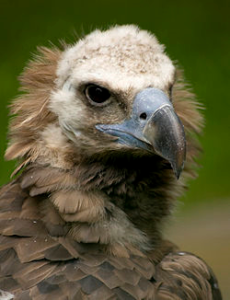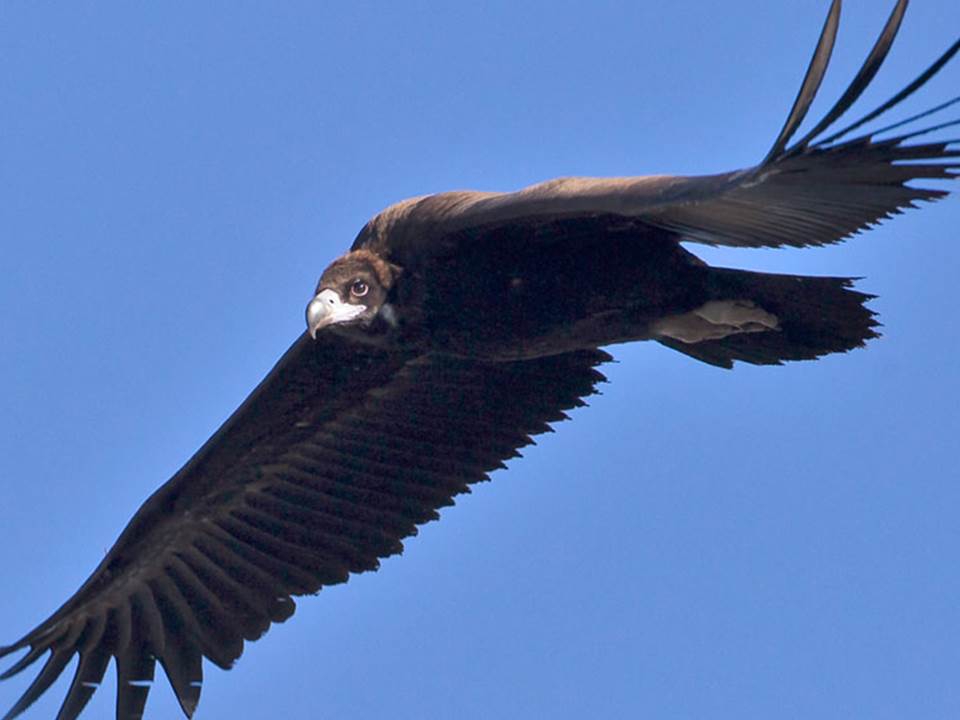The fast pace of human development since the Industrial Revolution has had an undeniable and often damaging impact on a variety of species, resulting in the extinction of several and the endangerment of numerous others.
Species are going extinct all over the world: Scientists believe that the Earth is losing between 200 and 2,000 species every year. Up to 1 million species are at risk of extinction due to human activity, according to a recent U.N. report
Human activity, such as overconsumption, illegal poaching, deforestation and fossil fuel emissions, veterinarian drugs and poisons are pushing ecosystems toward a point of no return.
The Black Vulture
Cinereous Vulture also known as the Black Vulture is the biggest bird of the European prey and also one of the biggest birds of the world. Its wingspan can reach 3 meters and are distinguished mainly by the totally dark, almost black plumage. Often remote and mountainous areas with steep slopes and away from the presence of humans, ranges through southern and eastern Europe, the Middle East (Iran, Afghanistan), central Asia, and into Mongolia and southern China. 
They can travel ten kilometers daily for food depending on the availability of the preys. In recent decades, due to the regression of the rabbit population, black vultures have gone from rabbit-based feeding to sheep-fed; wild goats, pigs and ungulates can also integrate their diet on a smaller scale.
Their reproduction is made in scattered colonies, almost always in trees, and become adults at 3 to 6 years, living, on average, 20 to 25 years.
In the last two hundred years, the Cinereous Vulture greatly decreased in numbers in most distribution areas. For 40 years (19 70 – 2010) no Black Vulture had reproduced in Portugal
Causes of the extinction of the Black Vulture
In the early 70’s, the Black Vulture disappeared in Portugal due to several factors: persecution (accused of causing damage); the destruction of nesting habitat (destruction of native forest for afforestation, tree-felling during the breeding season, undergrowth clearing, construction of new tracks to extract timber, or for burns); the illegal use of poisons and the new sanitary standards that the European Union created after the outbreak of Encephalopathy Bovine Spongiform
Although critically endangered the black vulture continues to prove its return in Portugal. A question of luck or the result of a joint effort of conservationists?
Portuguese Institutions supporting the Black Vulture
In 2018, the blog “Observador” published a piece of news about the revitalization of the Black Vulture, that is the most endangered species in Portugal. According to the biologist Eduardo Santos, there are only two dozens of black vultures in Portugal. Their characteristics are important to our environment and for the balance of Nature.
Eduardo Santos said that the species has been recovering since 2010 and is breeding in national territory, after having disappeared in the 70’s as a breeder. Today, there are eight couples in Alentejo to reproduce, he added.
In Portugal there are three breeding centers: the Tejo international (the largest colony), the International Douro and the Herdade da Contenda, property of the Municipal Council of Moura. The best black vulture observation areas are in the Alentejo, the regions of Marvão and Barrancos, as well as the Mértola area. The Vilar Formoso area and the Malcata mountain range are places where the odds are also good.
With these eight / ten years, the return of Europe’s largest bird of prey to our country has been closely followed and supported by dozens of conservationists from various institutions. The position changed with the expansion of the National Network of Protected Areas as the creation of the natural parks of the Douro and Tagus International, with projects such as Life Rupis, coordinated by SPEA, in the transboundary zone of the Douro, where there are actions of conservation of the British and the Bald eagle, as the control of poisons. And an LPN project, LIFE Habitat Lince-Abutre, completed in September 2014: the team installed 12 large nests, in structures composed of metal rods with a basket at the end, in Herdade da Moura, and continued reproduction.
Some setbacks
On March 30th 2015, the environmentalist association Quercus denounced the death of one black vulture caused by poisoning, near Vila Velha de Ródão. The environmentalist, explained that the bird collected by the “Serviço de Proteção da Natureza e Ambiente” (SEPNA) had been admitted in the “Centro de Estudos e Recuperação de Animais Selvagens” (CERAS) in Castelo Branco alive, but it ended up dying. “At this time of year, there are hundreds of abandoned starving animals in the region (dogs), which can attack herds and even people.
Breeders and hunters often use poison to kill them, which end up dying and causing other victims, like birds and wild mammals”, said the environmentalist to Lusa, highlighting that poisoning is a crime.
Much remains to be done, and in many respects we remain behind.” , defends the conservationist Eduardo Santos, “It is necessary to bet even more on combating illegal poisons, and the Portuguese Government must say no to the veterinary drug Diclofenac – which has serious impacts on the health of black vultures and other necrophagous species.
In addition, Joaquim Teodósio , from Sociedade Portuguesa para o Estudo das Aves (SPEA) states that the National Plan for the Conservation of Necrophagous Birds – which includes the black vulture – “has been in the drawer since 2015”. “It would be important to make conservation more effective and effective. It would be a good reinforcement for endangered species. ” He added that the 2017 fires killed directly a newborn and destroyed miles of natural habitat
After all it has been through, is there any future for this species?




You must be logged in to post a comment.